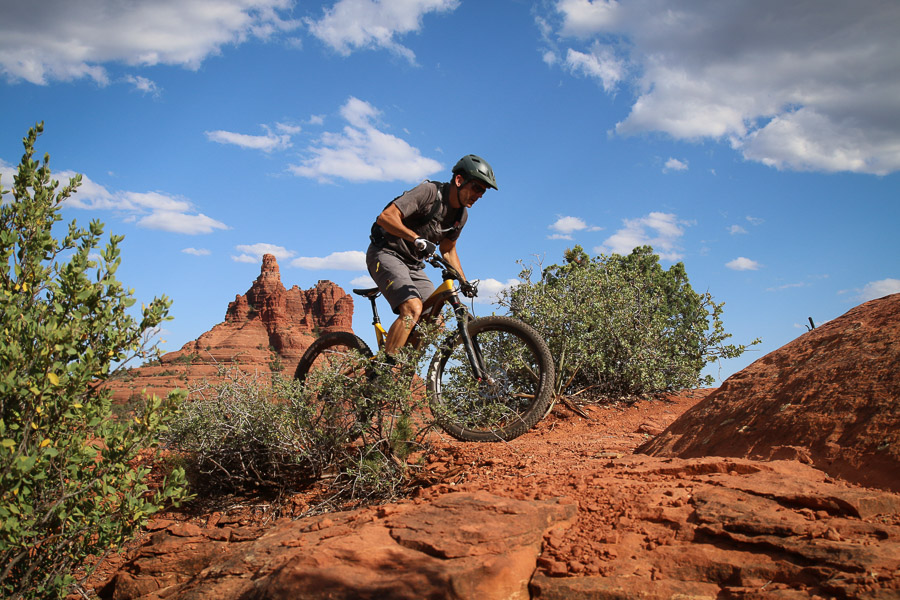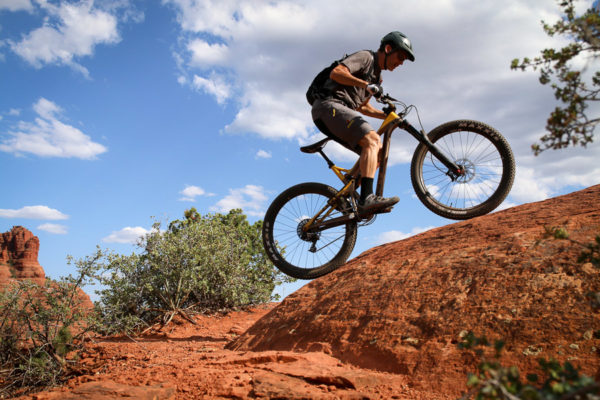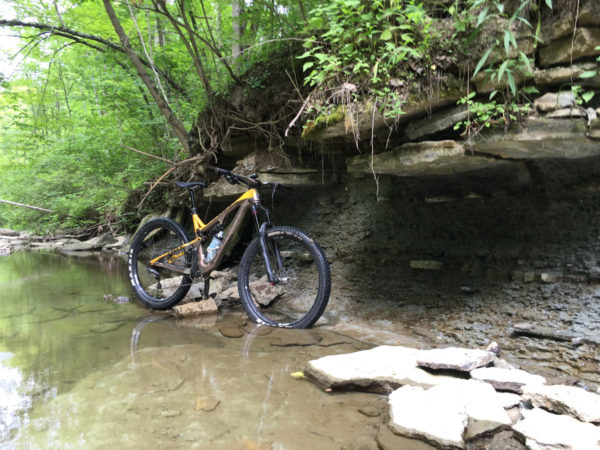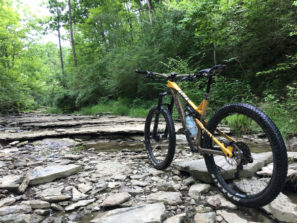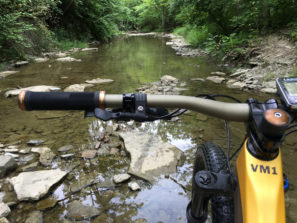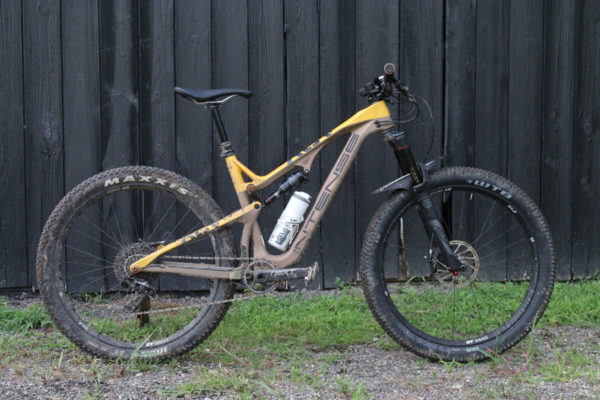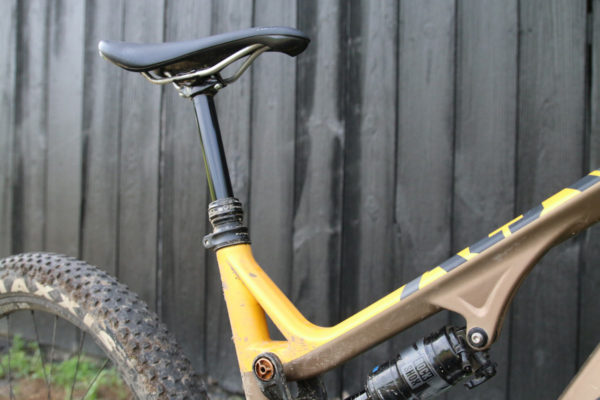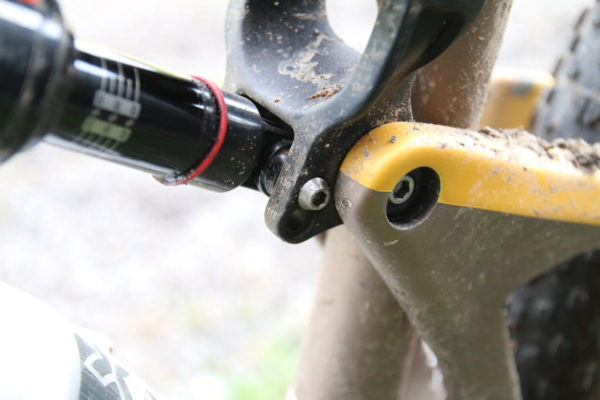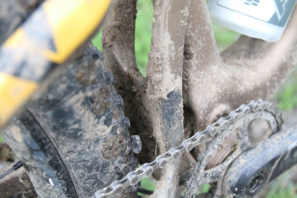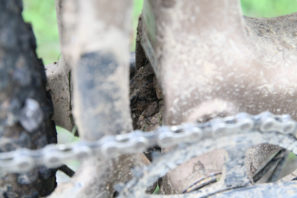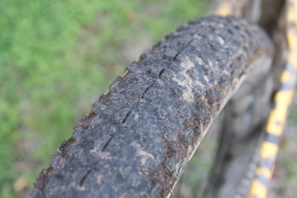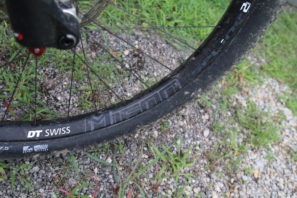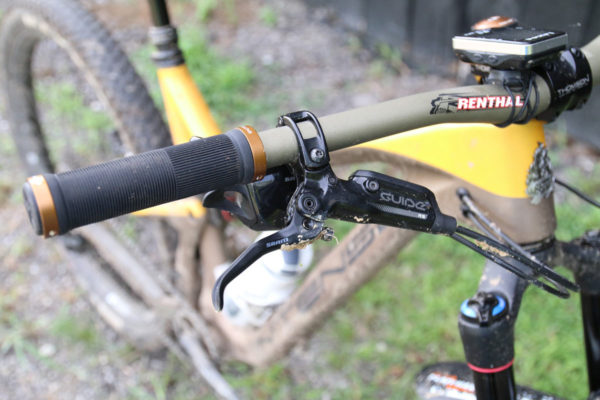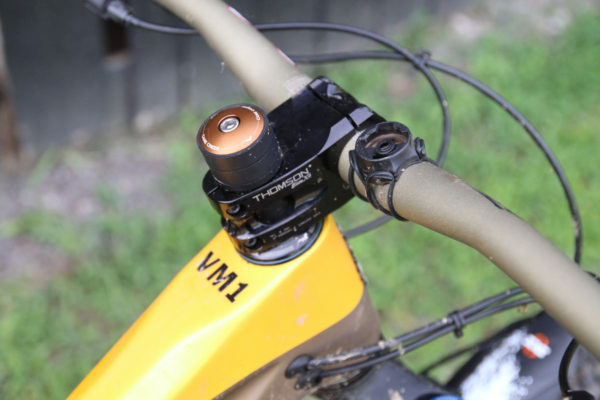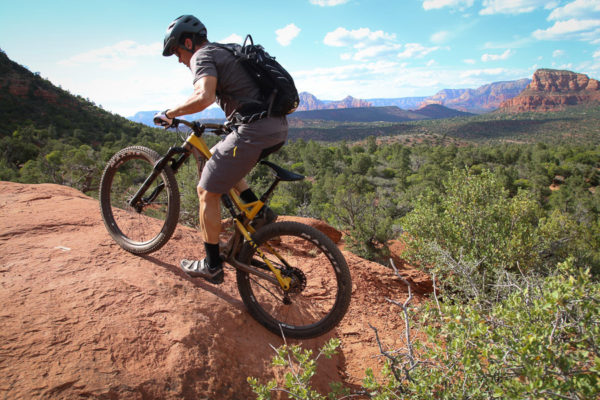At this current point in mountain bike history, it’s more surprising when a company has something to show us that isn’t Plus or Plus compatible. The new option seems to be spreading quickly, mostly due to the fact that the newest generation of 29ers can be an either/or scenario.
Intense is doing things a little differently.
Rather than offer a bike that can convert back and forth between two different wheel sizes, their new ACV is focused on fat. Well, mid-fat. The ACV is built around the stock 27.5 x 2.8″ tires and has a geometry that is tuned to match. During our annual pilgrimage to the Sedona desert, we got a sneak peek at what Intense had in store for their newest model. And in what’s becoming standard practice for the company, we received an ACV of our own to review on our home trails ahead of the launch to see what makes this Plus sized bike tick…
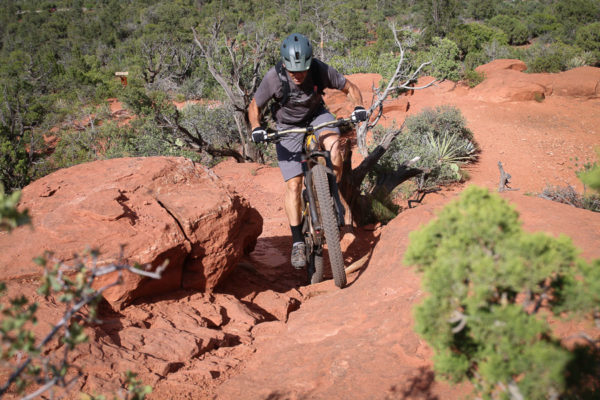
At this point, I have ridden a number of Plus mountain bikes in hard tail, full suspension, and in 26+, 27.5+, even 29+. Leading up to this review, I was still trying to wrap my head around the concept. I like Plus bikes, but I couldn’t really put my finger on exactly why you would purchase one. One theory is that they are great for beginners and intermediate riders thanks to the increased traction and confidence they provide. I don’t doubt that to be true, in fact I have anecdotal evidence to support that as fact. But since I can’t consider myself a beginner, I don’t have that frame of reference.
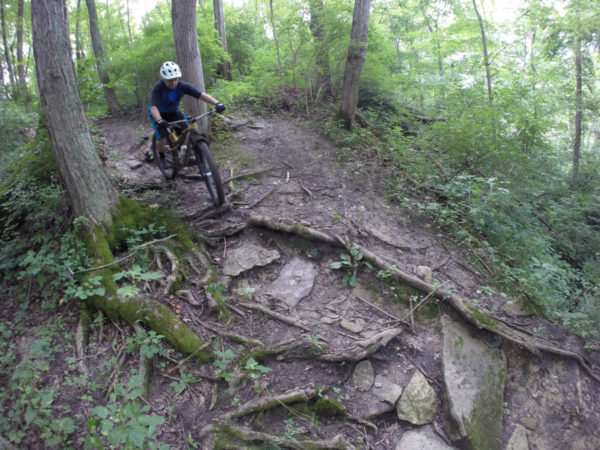
So how does a Plus bike like the ACV fit in for intermediate to advanced riders? It all boils down to traction (obviously), but it took an exploratory ride on the ACV (as well as a few recent rides on other Plus bikes) to really figure it out. To be fair, every time I’ve been on a Plus bike I’ve never felt particularly fast. Even on downhill sections, the sensation of speed is a bit muted – it isn’t until you get home and check the times and realize not only that you were flying at points, but you also just stole that long standing KOM, from yourself. When traveling at warp speed, it’s really easy to appreciate how well the bike hugs the terrain between the suspension and Plus tires.
Downhill traction then is available in spades, but what is more surprising is the climbing traction.
Intense JS-Tuned bikes are great climbers to begin with, but when combined with Plus tires, they’re apparently magical. Keep in mind that the ACV was fitted with a Maxxis Ikon+ rear tire which isn’t exactly an aggressive tire. The lightbulb moment came when I attempted a climb on a local trail that I’ve been trying to clear for awhile. Calling it a climb may be a little generous – it’s bascially a root and rock filled drainage chute that pitches upward at an average 19% grade with a number of power moves over small drops. By how easily I cleared it on the ACV, you would have never guessed it was my first time (maybe the first time ever, I still have yet to see anyone else clear it). That surge of confidence got my mind thinking in a completely new direction. All of a sudden, there were multiple new routes for me to ride a trail that I have been riding literally as long as I have been mountain biking. So I set off for new challenges. I approached an abandoned trail that is so steep and rough, I rode right past it before turning around and deciding to give it a go. The ACV crushed the 22% average grade and made the damp leaves and roots seem like slickrock. The climbing ability on this thing is ridiculous.
Then, while riding across a creek, it dawned on me. Why not ride in the creek? I’ve done some creek exploring by fat bike before in this same location, but never with the speed I was able to carry with the ACV. Again, the bike opened up new ways to ride the same trail, and maybe more importantly – allowed me to escape from the crowds in the park over the holiday weekend.
When it comes to the bike itself, it is still very much an Intense from the aggressive styling, to the playful ride, and performance spec. While a medium like the Spider 275 C I recently tested, it does feel like a bigger bike. That is likely due to Intense giving it a longer, lower, and slacker build than they would use for a 29er of the same travel. You will experience crank strike with this bike with the BB at 13.25″, but it isn’t a huge issue. As is usually the case for me with Intense frames, the medium left me without room to run the stock 150mm dropper post, but Intense built it with a 125mm post for the review. I admit that I have an odd fit, but there have been a few long travel big bikes in medium recently that have let me run the full 150mm dropper – seeing the seat tube shortened a bit would be a bonus in my eyes. For reference, the medium Pivot Switchblade has a seat tube length of 16.75″ while the ACV is a full 18″, even though the Switchblade medium has a longer TT and reach.
The travel adjust feature might be useful to some, but I’ve left it mostly in the 130mm position. The bike maybe feels like it pedals slightly better in the 115mm position, but I’d rather have the additional travel – especially when paired with a 150mm travel fork. Fortunately, the feature doesn’t take anything away from the bike, it just adds the option if you’re interested. Thanks to the excellent RockShox suspension, the ride can be tuned to be super plush, but a flick of a switch on either the Monarch or Pike makes it a very efficient ride.
While Intense stated the dual upright of the rear triangle was added to increase rear stiffness, it has another big benefit – built-in mud protection. You may remember me commenting on how much mud had accumulated on the i-Box link on the Spider 275, since it had a single upright and nothing really between the rear wheel and the link. The ACV has a large piece of carbon in the way which has dramatically reduced the build up on the link which can only be a good thing for a bike that will probably see a lot of muck.
Some of the best news in terms of spec came in the form of the tires. The Maxxis Ikon+ is a great tire, just more as a rear and not so much as a front. Initially, Intense was thinking of spec’ing the ACV with Ikon+ tires front and rear which is why it’s shown that way in most of the pictures, but after feedback from many of the testers (including myself), the choice was made to ship production bikes with an Ikon+ rear, but with a more aggressive Rekon+ front. I rode the bike quite a bit with the Ikon+ front and rear, but just found that the front wanted to push when cornering hard, especially in loose or wet terrain. After switching to the most aggressive tire I had on hand (27.5 x 3.0″ WTB Trail Boss), I never looked back. With more aggressive rubber up front you could really stab the front end into corners and trust that it wouldn’t just understeer off the trail. I’ve spent enough time on the Rekon+ to know that it will make a great tire for the bike and is a welcome addition. In the desert with lots of square edged rocks, my tires pressures were higher around 16-17.5 psi, but back home with smoother trails pressures dipped as low as 13.5 psi according to my SKS digital gauge. Dialing in pressures on plus and fat bikes is still quite difficult as finding a reliable gauge can be tricky – all of my pumps were reading much higher than the digital gauge.
The Pro Build will be running those tires on the DT Swiss M 1600 Spline Two, which is DT’s new plus wheelset. The rims utilize a 44mm ext/ 40mm internal rim width, and are built to 28 hole DT Swiss 240 Boost hubs. Tire fit on the rim is pretty tight, and the WTB tubeless tire seated very easily.
Sticking with the SRAM theme, the ACV stops using SRAM Guide RS hydraulic discs with 180/160mm rotors. Considering this is the Pro Build, it should come as no surprise that every component is something that you would choose to spec on your own builds. Even down to the Intense branded lock-on grips which are quite comfortable. Our medium build with the 125mm dropper came in at 28.96lbs (13.14kg), without pedals.
Where does this leave us with Plus bikes and more importantly the ACV? Well, as far as Plus bikes are concerned, the ACV is quite good. The bike is equally at home sending techy downhills at ludicrous speed as it is motoring up steep climbs strewn with debris and has a distinct Intense feel. Our time in the desert and other low traction situations has highlighted the tires’ strong points, but there are still some personal decisions that need to be made before jumping on something like the ACV. Technically it can still run 29″ wheels, but the focus here is clearly 27.5+, which should be yours as well. If you’re the type of rider to do more exploring than racing, but still want a full suspension rig capable of pedaling up and blasting down, you might just want to put an ACV into service.
